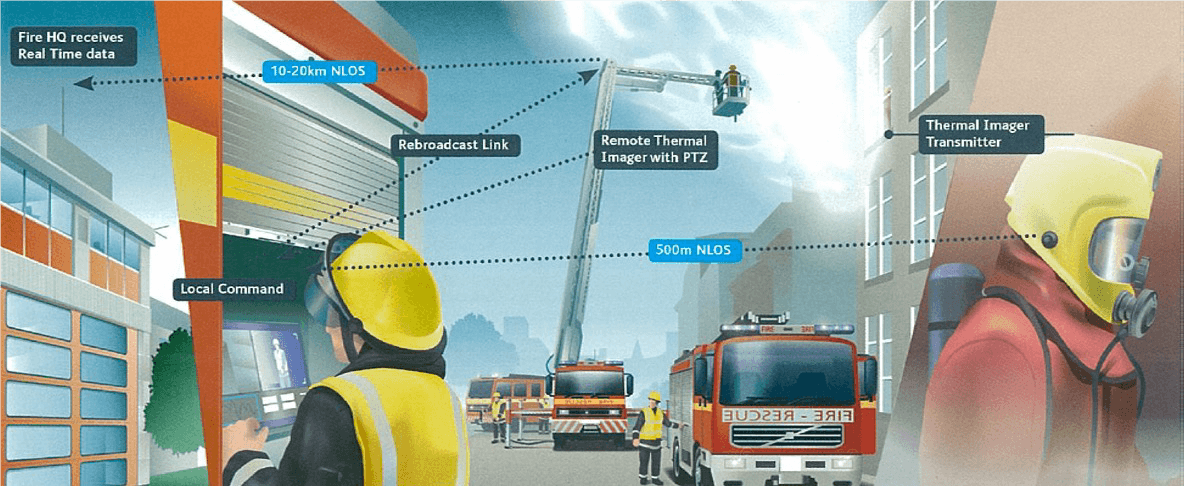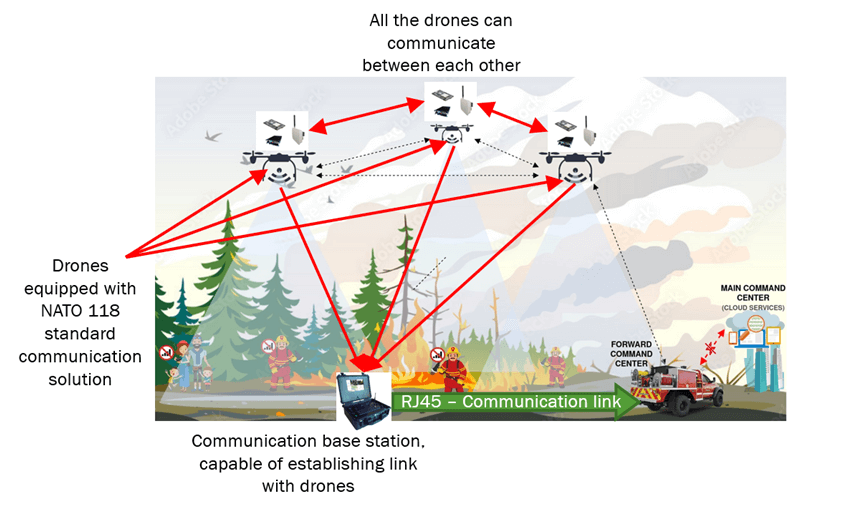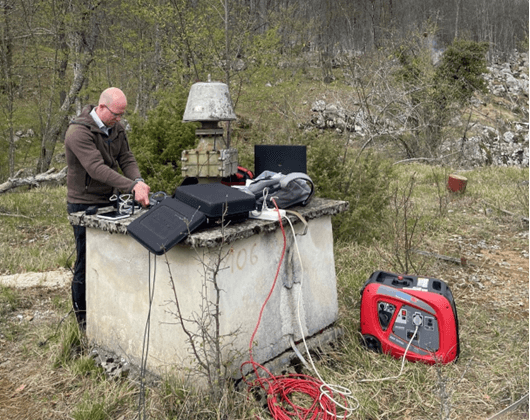MESH-in-the-Sky
MESH-in-the-Sky
The MESH-in-the-Sky system (User Product 12) is a revolutionary part of the SILVANUS project, designed to establish robust wireless communication for first responders during critical forest fire operations. This advanced system utilizes Software Defined Radio (SDR) technology to overcome environmental challenges such as signal interference from vegetation and terrain. The network facilitates real-time data transmission between ground-based command centers and the SILVANUS cloud command center, enabling strategic coordination and efficient response during the crucial “Golden Hour” of emergencies.

The advantage of using a SDR is that it can be readily adapted to different communications environments. The SDR offers, in a single device, a database of waveforms to meet different needs in a wide range of wireless applications and uses. Thus, it can be used in harsh environments and mobile applications.
It can also be connected, on an ad-hoc basis, to form a network that lets each radio, automatically, connect to others, creating a self-healing, mobile and dynamic IP mesh network. Each automatically routes data around the wireless network and may easily be configured to operate without user intervention. This makes the system ideal for rapid deployment scenarios.

The MESH-in-the-Sky system provides a robust communication network for first responders during critical operations, particularly in the absence of existing infrastructure. It features:
- Real-time ISR Data Gathering: Integrated cameras provide live surveillance.
- Backhaul Communication: Ensures data transmission to a remote command center via Cloud Relay.
- Wi-Fi Access Points: Network hotspots for personnel connectivity provided by ground nodes.
- Extended Range Communication: Utilizes MESH radios to operate beyond the line of sight, ensuring continuous communication.
During the April 2023 field exercise activity organised in Croatia, engineers demonstrated the operational configuration of the MESH-in-the-Sky wireless nodes. The communication infrastructure was used to transport in-situ device data captured and generated from the IoT sensors that were deployed for the detection of smoke and fires. The IoT device communication was interfaced with the Wireless Mesh, which was further interfaced with the Internet through 5G router, thus enabling Internet access to the IoT sensor. The wireless mesh bandwidth was tested to be reliable for the transportation of the images and HD videos that were gathered from the field.

Operational Benefits:
- Enhanced ISR Capabilities: Real-time surveillance and data gathering from multiple vantage points.
- Robust Communication Network: Ensures continuous and reliable communication during critical operations.
- Scalable IP Schema: Structured IP allocation facilitates future expansions and seamless integration.
- Integration with SILVANUS Cloud: Facilitates the exchange of information from the field to the cloud for comprehensive data management.